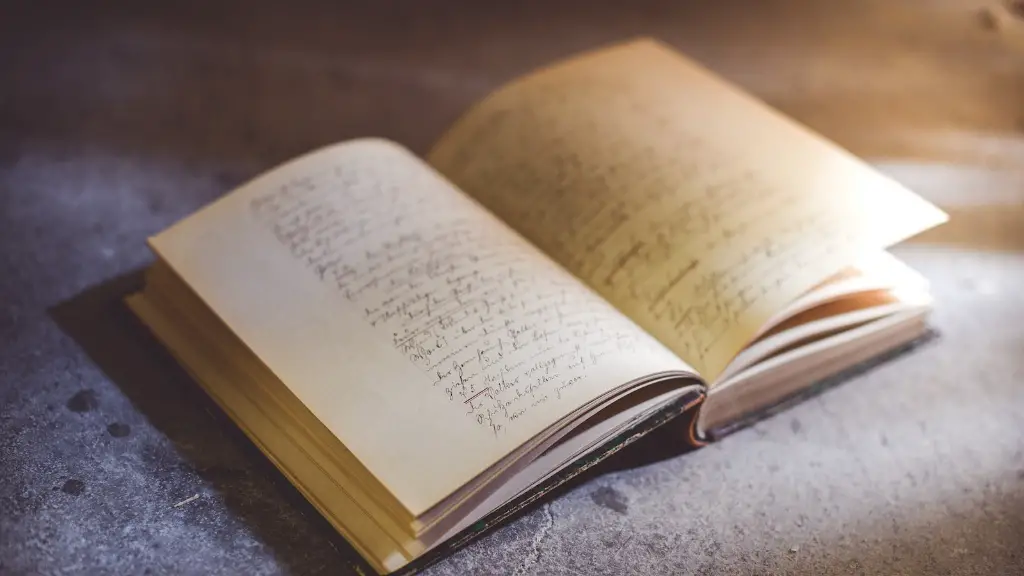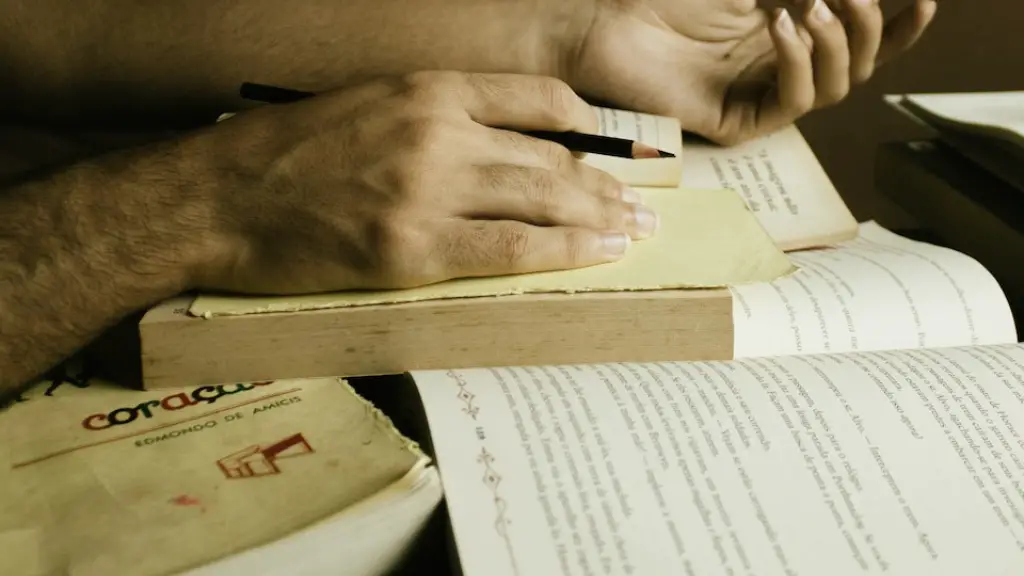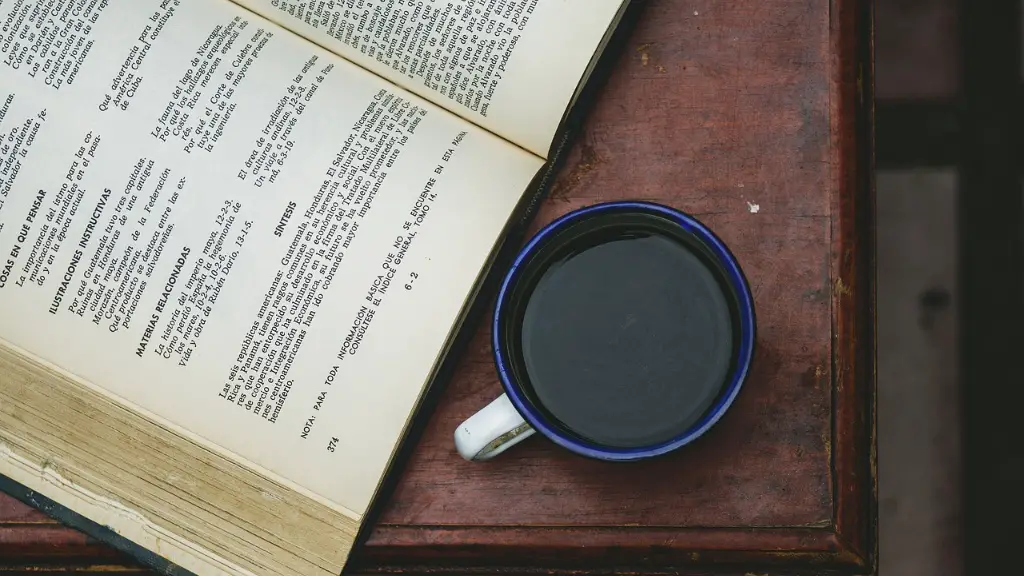Literal language in poetry is an important part of the craft of poetry. It refers to the use of language that is specific, precise, and concrete. The opposite of literal language is figurative language, which is language that is used to create images and figures of speech.
Understanding how and why literal language is used in poetry can help poets create more meaningful and effective poems. In order to do that, it is important to first understand what literal language is, how it differs from figurative language, and the types of literary devices that can be used to create evocative meanings.
Literal language is the use of concise words and precise descriptions to communicate a precise meaning. While it may seem quite straightforward, there is often more to it than meets the eye. In order to create effective literal language in poetry, poets need to use special techniques, like similes and metaphors, and carefully select the words they use. This can help to create rich, evocative descriptions that appeal to readers and help bring the poem to life.
Figurative language, on the other hand, is language that is used to paint a picture, create a metaphor, or make a comparison. Unlike literal language, it is often more abstract and less precise. Figurative language can be used to create vivid images, convey powerful emotions, or emphasize certain points. In contrast to literal language, figurative language often makes use of allusions and symbolism to express complex ideas.
One of the most important aspects of using language, literal or figurative, in poetry is to create an emotional connection between the poem and the reader. Poets often use their words to evoke a particular emotion in the reader, and the use of literal language can be key in creating this emotional response. By using literal language to make precise descriptions, poets can help the reader better understand the poem and its meaning.
Using both literal and figurative language can be a powerful tool for poets. By combining the two, a poet can create a powerful, evocative poem that appeals to readers. The challenge lies in carefully selecting words and combining them to create vivid imagery and powerful emotional responses in the reader.
Different Kinds of Literary Devices
When it comes to creating effective literal language in poetry, poets can make use of a range of literary devices. These devices can help create vivid images, make complex ideas more accessible, and evoke powerful emotions in the reader. Some of the most common literary devices used in poetry include similes, metaphors, personification, and alliteration.
Similes and metaphors are two of the most frequently used literary devices in poetry. Similes are used to create vivid comparisons between two objects or concepts. They typically use the words “like” or “as” to make the comparison. Metaphors, on the other hand, make more direct comparisons between two different things. Rather than using the words “like” or “as”, metaphors make a direct comparison between the two objects or concepts. Both similes and metaphors can help make complex ideas more accessible and create vivid imagery in the reader’s mind.
Personification is another literary device that can be used to create vivid descriptions. This involves giving human qualities or characteristics to something that isn’t human. For example, a poem might refer to the wind as “howling” or the sun as “smiling”. Personification can help create a sense of intimacy between the poem and the reader and help evoke certain emotions.
Alliteration is another popular literary device used in poetry. This involves repeating the same beginning sound in a series of words. This technique can help create a sense of rhythm and flow in the poem and make it more enjoyable for the reader.Using Language Creatively
In addition to using literary devices to create vivid images and evoke powerful emotions, poets can also use language creatively. This involves using words in unexpected ways to create new meanings and evoke strong emotions in the reader. For example, a poet might use words like “slumber” or “whisper” to create a feeling of calm or use more vivid words like “scream” or “roar” to create a feeling of danger.
Using language creatively can be a great way to enhance the meaning of a poem and make it more appealing to readers. By carefully selecting the words they use and playing with their placement, poets can create powerful images and evoke strong emotions in the reader.
Conclusion
Understanding the differences between literal language and figurative language in poetry is essential to crafting an effective poem. Literal language is the use of precise, concrete words to communicate meanings while figurative language is the use of images, allusions and symbols to create vivid pictures. By combining the two, a poet can create a powerful poem that will resonate with readers. Poets can also make use of a range of literary devices, like similes and metaphors, to create vivid imagery and evoke powerful emotions in the reader. Additionally, poets can use language creatively to create new meanings, express complex ideas, and make their poems more appealing to readers.
Language and Imagery
Using language and imagery effectively is an important part of creating a successful poem. Imagery is the use of words and phrases to create pictures in the reader’s mind. By using vivid descriptions and carefully selected words, poets can create powerful images that evoke strong emotions in the reader. Poets can also combine imagery with figurative language to create even more evocative images and feelings.
The words a poet uses can also help to create meaning and evoke emotion. By carefully selecting words, a poet can create vivid imagery and powerful emotions in the reader. They can also use language creatively to create new meanings and express complex ideas. Additionally, poets can make use of literary techniques, like alliteration, to create a sense of rhythm and flow in the poem.
Using Language to Convey Meaning
A key part of crafting a successful poem is conveying the poem’s message to the reader. Poets can use language to create visual images and evoke strong emotions, but they can also use language to communicate the poem’s deeper meaning. By carefully selecting words, a poet can convey complex ideas in a concise and powerful manner. By combining literal and figurative language, a poet can create vivid images and invoke powerful emotions while also conveying the poem’s message to the reader.
Using Language for Multilayered Meanings
Poets can also use language to create multilayered meanings. By using both literal and figurative language, a poet can create an image or situation that has multiple meanings. This can be used to create complex poems that are open to interpretation and will appeal to a wide range of readers. By using language creatively and combining literal and figurative language, poets can create poems that are full of meaning and evoke strong emotions in the reader.
Using Language in Context
Finally, it is important to consider how language is used in the context of the poem. Language can mean different things depending on how it is used and the context it is used in. When crafting a poem, a poet needs to think carefully about how they are using language and how it will be interpreted by the reader. By considering the context of their language, a poet can create a more effective and meaningful poem.




